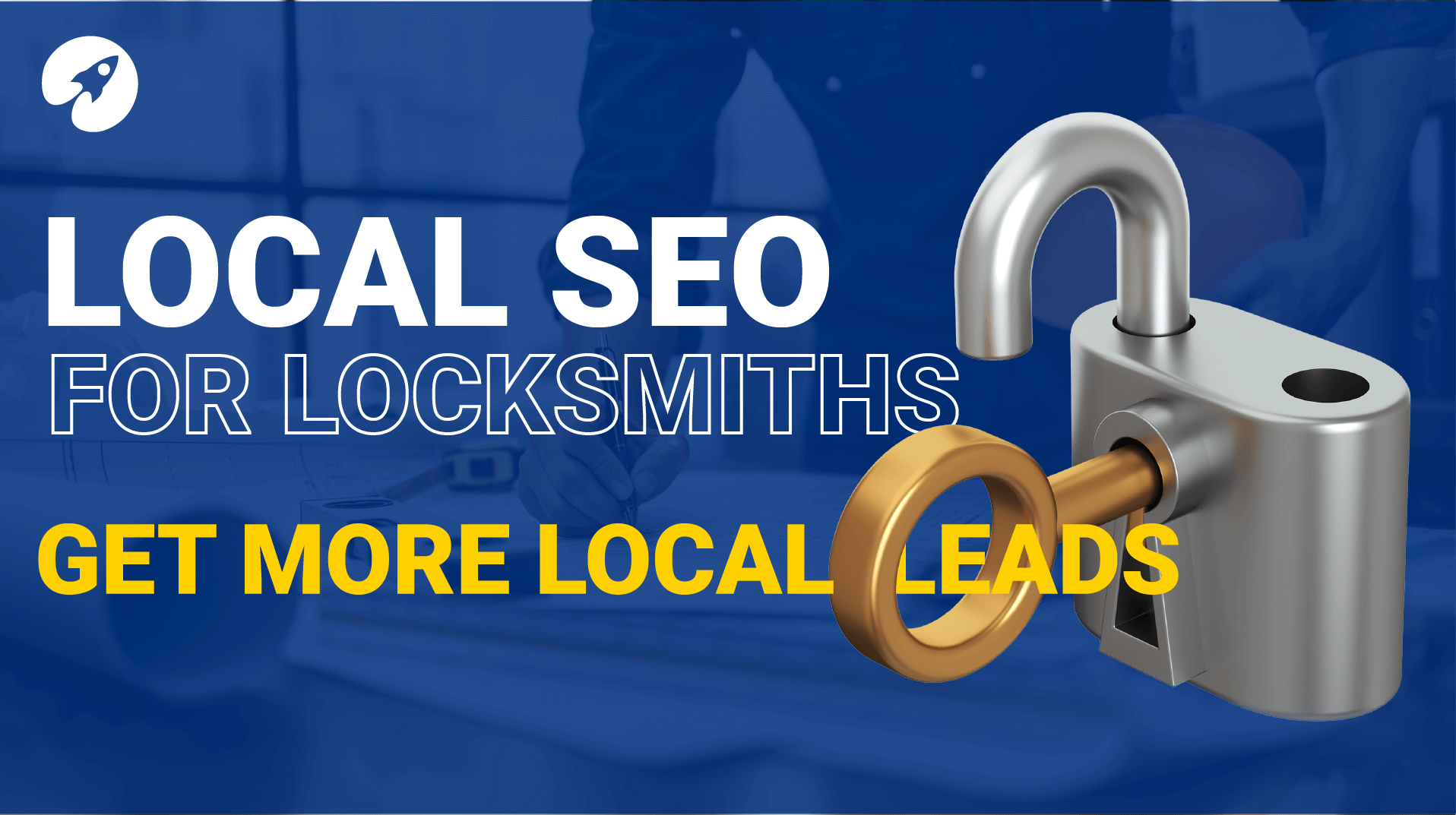
Search engine optimisation (SEO) is integral to any locksmith’s online marketing strategy.
A locksmith who does not optimise their website for search engines is missing out on many potential customers.
By optimising your website, you can get found when someone searches for “locksmith near me”, “locksmiths London”, or any other similar terms.
- 1. Keyword research and how to do it
- 2. Using Google Analytics to track results
- 3. Guest posting
- 4. Directory citations
- 5. Posting on social media
- 6. User experience
- 7. Titles & descriptions
- 8. Content length on pages
- 9. Competitor analysis
- 10. Alt tagging images
- 11. How long does SEO take
- 12. URL structure
- 13. Optimising GMB listing
- 14. Mobile & tablet responsive websites
- 15. Checking website for technical errors
- 16. Internally linking pages
- 17. Website speed
- 18. Reputation management
- 19. How to track keyword performance
- 20. Optimising pages using Surfer SEO
Why is SEO important for locksmiths?
Search engine optimisation allows your locksmith business to rank higher in search engine results.
This means that potential customers are more likely to visit your website, so you have a better chance of them becoming paying customers.
It will help build your brand: Search engine optimisation helps increase the visibility of your locksmith business in many different places online; this helps increase the familiarity and trustworthiness of your brand.
It will help build trust: When people see that you appear multiple times on search engines, they are more likely to trust you as a reliable and authoritative source.
This leads to increased conversions, sales, and customer loyalty.
It will get you more locksmith leads: SEO helps get your business in front of the right people at the right time. When someone needing a locksmith search for terms related to what you do, they will be more likely to find and contact you if your website is optimised.
This will increase the number of valuable leads your business is getting.
#1 Keyword research and how to do it
When it comes to SEO, your primary focus should be on the keywords and phrases that potential customers are searching for when looking for a locksmith. To determine which terms you should target, you need to do keyword research.
Start by listing relevant words and phrases related to your business. This can include “emergency locksmith”, “locksmith near me”, or even more specific location terms like “locksmith in London”.
Once you have this list, use Google Trends or other keyword research tools to see how popular these terms are and get an idea of what potential customers might be searching for.
The best keyword tools to use are SEMRush, Ahrefs or UberSuggest. These tools will tell you the difficulty of ranking and also how many people are searching for them per month.
SEMRush offers a free trial, so we will show you how to use that tool for this article.
First, set up a free trial and then use the keyword magic tool to input a list of keywords you would like your business to rank for. SEMRush will now show you a list of keywords and related keywords you should target.
Put all these keywords into an Excel file or Google sheet, and then start building local service pages and blogs to target the keywords.
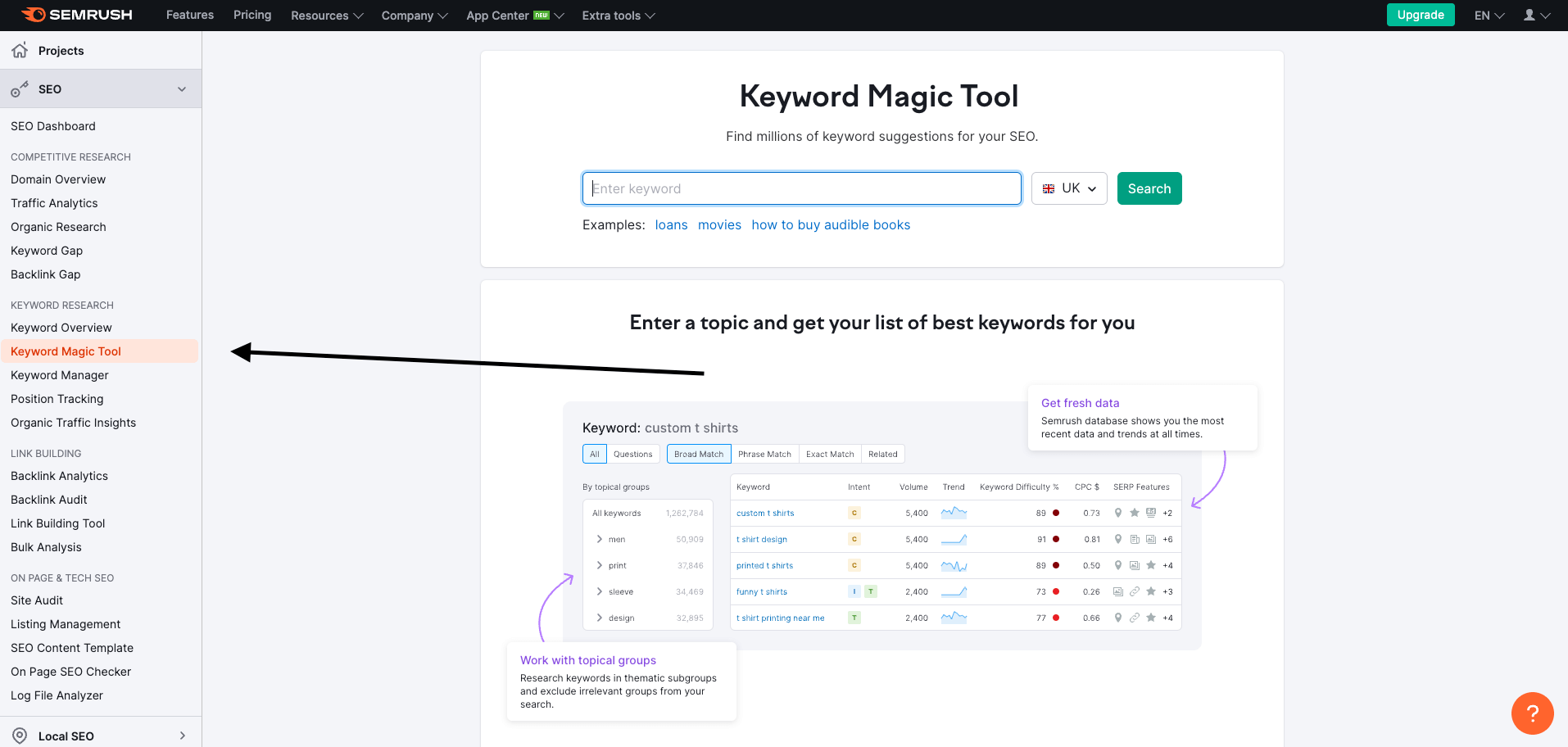
#2 Using google analytics to track results
Once your website is optimised for search engines, the next step is to track the results.
To do this, you must set up Google Analytics on your website. This will help you measure and see how well your SEO efforts are doing.
Google Analytics gives you lots of data that can be used to improve your SEO strategy further.
For example, it will show you which keywords people use when searching for a locksmith and what pages they visit on your site.
It will also show you where your visitors come from (i.e. organic searches or paid ads) and what devices they use (desktop, mobile etc).
Using this data, you can identify which keywords are performing best and focus more of your efforts on those, as well as identify which pages are working best and focus more of your content there.
How to set up Google Analytics
Setting up Google Analytics is relatively simple. First, you will need to create a free account with Google. Go to – https://analytics.google.com/analytics/web/
Once your account is created, log in, copy the tracking code they provide, and add it to the bottom of all pages on your website (before the closing < /body> tag). This code is what communicates with Google Analytics and collects the data.
How to set up Google Search Console
Google Search Console is another helpful tool for tracking your SEO performance. It will tell you how many people are finding your website through organic search and which queries they use.
It also shows errors on pages, backlinks to your site and more. To set up Google Search Console, go to – https://search.google.com/search-console/about
Again, you will need a free Google account to use this service. Once signed up, follow the instructions on the page – add all versions of your website (e.g. http:// or https://) and then verify it by adding a code or confirming via “Domain Name Provider” or “HTML file upload”.
Once verified, Search Console will start giving you data on your SEO performance and errors that need to be fixed.
#3 Guest posting
Another essential part of SEO is to do some link-building. This means getting other sites to link back to yours, which will help with rankings and traffic.
One of the best ways to do this is by guest posting on related websites or blogs. You can write articles about locksmith services or improving the security of your home/business and then add a link back to your site at the bottom of the article.
Another way is through email outreach – find related websites (e.g. home security websites) and contact them asking if they would be interested in adding a link from their website back to yours as a resource for their readers.
The best pages to get links to your website are your service pages and blogs, which will build up your website’s domain authority, and you will get more traffic and leads.
#4 Directory citations (General & niche)
Directories are another great way of getting more links to your website.
Your local SEO will be massively improved if you get listed on general directories; are sites like Yell.com, Yelp and Thompson Local. [The best free local directories list]
You can also search for online directories related to locksmithing and submit your business details with a link to your site. This will help with rankings in the local area, as well as helping with brand awareness. To find niche-related directories. Go to Google and search for locksmiths “directory”. This will pull up a list of directories directly related to the locksmith trade. Reach out to these directories or set up an account and submit a listing.
You should also set up profiles on all the major social media platforms (Facebook, Twitter etc).
This will help improve your brand’s visibility and get more people talking about and sharing your content.
#5 Posting on social media
The key to success with social media is consistency – create a posting schedule (e.g. post daily on Facebook and Twitter) and stick to it!
You can use tools like Hootsuite or Buffer to help you schedule posts in advance, so you don’t have to worry about posting every day manually.
You must also respond quickly to any comments or messages from customers – this will show potential customers that your business is reliable and will make them more likely to use your services.
The best social media platforms for locksmiths are Facebook, Twitter, LinkedIn and Instagram. Post about recent projects, awards you have won, new staff that have joined the team and tips on how to make your property more secure.
Finally, share content from other websites related to locksmithing, as well as your own blog articles.
This will establish you as an authority in the industry and help build relationships with other professionals.
#6 User experience
If you want your website to be successful, it needs to have a great user experience.
This means ensuring visitors can easily find what they’re looking for and navigate the site quickly.
Make sure to have clear calls to action on each page (e.g. “Book Now” or “Get a Quote”) so that visitors know what the next step is if they want to use your services.
We would also recommend making sure the pages load quickly – slow-loading pages will frustrate users and could result in them leaving without taking any action.
To help with this, optimise images for web use and minify code where possible.
Finally, the site should be mobile-friendly and easily used on smaller devices like smartphones and tablets. This is important as more than half of all web traffic now comes from mobile devices.
More tips for locksmith website user experience
- Have a sticky navigation (the contact details follow the page when you scroll down)
- The number is big and easy to see
- The contact form button says, “Get a free quote.”
- Check website speed on GTMetrix
- Use internal linking to navigate the reader through your pages
- Have well-written content and subheadings
These are just a few ways that you can improve your website’s visibility and rankings in search engines.
#7 Titles and descriptions
The title and descriptions are what you see on a website before you click through on Google.
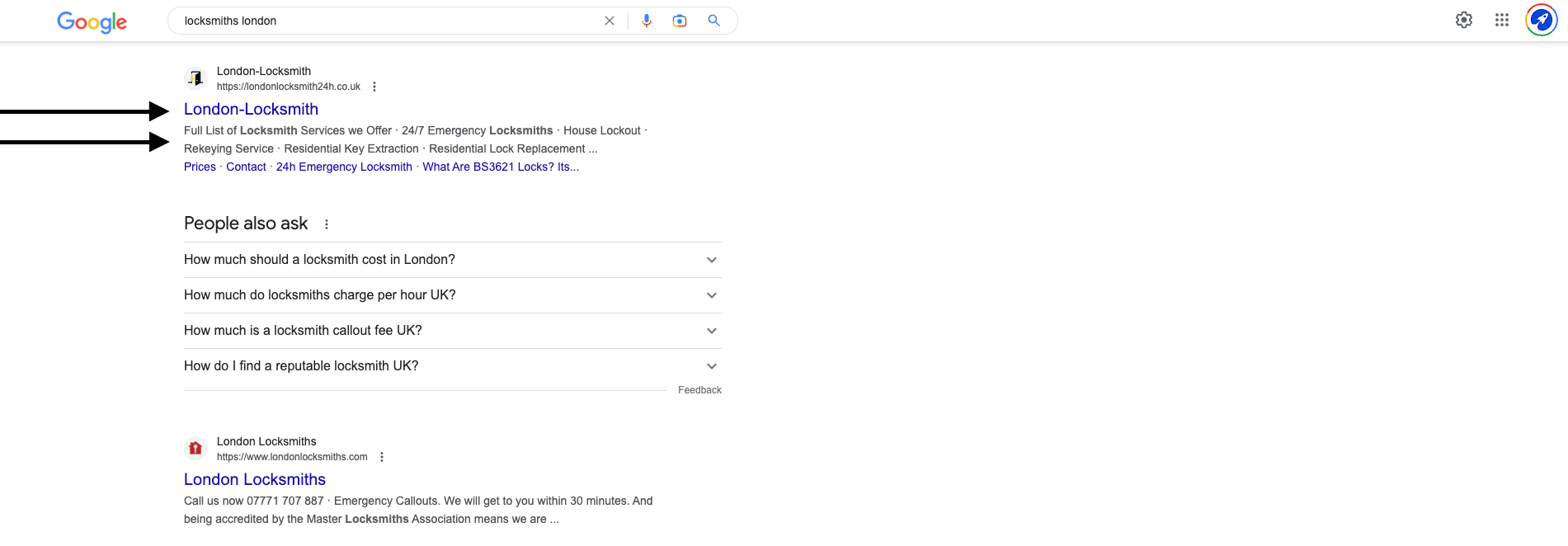
We also recommend ensuring that each page on the website has unique titles and meta descriptions.
This helps search engines understand what the pages are about, which can help with rankings.
It also ensures that your business appears in more relevant search results – increasing the chances of clicks from potential customers.
Your title and description should contain the keyword that you want the page to rank for. If you want to rank for a specific location, you must include the location in the title, H1 and the website content.
#8 Content length on pages
The content length on each page should be long enough to provide the user with all of the information they need.
This helps ensure that visitors will stay on your website for longer, improving the page’s ranking and increasing conversions.
Google generally likes pages containing at least 500 words, so make sure your pages are this long.
If you have a lot to say about a particular topic, we would recommend writing more than 500 words – this will also help search engines understand what the page is about and may result in a higher ranking.
To check how many words you will need, go to Google and search the keyword you would like to rank for, let’s say, “locksmiths London” Go to the top ranking page and then copy and paste the content and put it into a Word count tool like https://wordcounter.net/. This tool will tell you the word count, and you will know how many words Google wants on a page to rank for this keyword. Now write your page with a similar word count or more.
#9 Competitor analysis
Finally, it is important to keep an eye on what your competitors are doing and how they rank.
Use tools like SEMRush or SpyFu to analyse their content, keywords and backlinks to better understand what works in this industry.
This can help you make informed decisions about where to focus your efforts on your website.

To do this, go to SEMRush and drop your competitor’s URL in the domain overview; this will now show you how much traffic the website is getting, how many keywords they are ranking for and how many backlinks the website has. This is all essential data you can use when optimising your own website.
#10 Alt tagging images
Make sure that you have alt tags on each image; this will help Google understand what the images are about and rank them in the search engine. Google also use these tags to understand better what’s in an image so it can be indexed and appear in Google Images search results.
Run an SEO audit using the SEMRush audit tool, and this will show you if any of your images are missing alt tags.
Once you find the missing alt tags, go through them and give them a relevant tag.
Alt tags the image with keywords describing the image or even the location of the image. This will all help with getting your photos and pages ranked on Google.
#11 How long does SEO take
SEO is not something you can do overnight, and it does require a lot of time and effort. Depending on the number of pages and keywords that you want to rank for, SEO can take anywhere from six months to one year or longer.
It all depends on how much work needs to be done and if your website is currently optimised for SEO or starting from scratch.
So while SEO takes some time, in the long run, it pays off with an increase in organic search traffic, leading to more conversions.
It’s also important to remember that SEO is an ongoing process. You need to constantly monitor your performance and make changes as required when Google updates their algorithms or when new competitors enter the market.
But even with all of Google’s updates, SEO boils down to the same rules it has had for 10 years. Just create good-quality content and have high-quality and relevant links to your website. Doing this will ensure you stay at the top for very competitive keywords.
#12 URL Structure
The URL structure of your website is also essential for SEO. It should be descriptive and include the main keyword you want to rank for. For example, if you wanted to rank for ‘locksmiths London’, then your URL should look something like this: www.example.com/locksmith-London
Having a clear URL structure will make it easier for search engines to crawl, index and understand what your page is about, which in turn helps with ranking higher in the SERPs (Search Engine Results Pages).
We have seen many websites, and the URL structure contains numbers and underscores and does not even include the keyword they wish to rank for.
Fixing this simple issue will push your website higher on the rankings; make sure you redirect the old URLs to the new ones when you have made this change.
#13 Optimising GMB
It’s also essential to optimise your Google My (GMB) listing. GMB listings are very important if you want to rank in the local search results, as they can help your website stand out from the competition.
Make sure all of the information on your GMB listing is up-to-date and that it includes keywords related to what you do. You should also try to get reviews and include images and videos when possible so customers can get a better feel for your business.
Top tips for optimising GMB
- Have 100+ images of your team and work
- Have more reviews than your closest competitor
- Include your logo
- Have banner
- Do two Google posts a week
- Include all of your services
- Add a description and use all of the word count
- Add opening hours
- Address
- Phone number
- Email address
These are just some of the key points you should consider when doing SEO for your locksmith website. Remember, local SEO requires patience and hard work, but it will be worth it in the end!
#14 Mobile and tablet optimisation
You also need to ensure your website is optimised for mobile and tablet devices. Google now ranks websites differently depending on the device they are being accessed from, so it’s essential to ensure your website looks great on all devices.
If you have a responsive website, then this should not be an issue, but if you do not, then make sure that you create a separate mobile version of your website so users can access it regardless of the device they are using.
To check if your website is mobile responsive, visit this page – https://search.google.com/test/mobile-friendly. This will tell you if the page is mobile or tablet responsive. If it is not, give your website to WeWeb developers, and they will be able to fix this for you.
#15 Checking for website technical errors
Your website might look great, but technical errors could stop the website from ranking on Google. To run a site audit, go to SEMRush and run the audit test. This will show you any underlying issues with the site.
Get a list of the errors and the website warnings and give them to an experienced developer, they will fix them, and then you can resubmit your website back to Google.
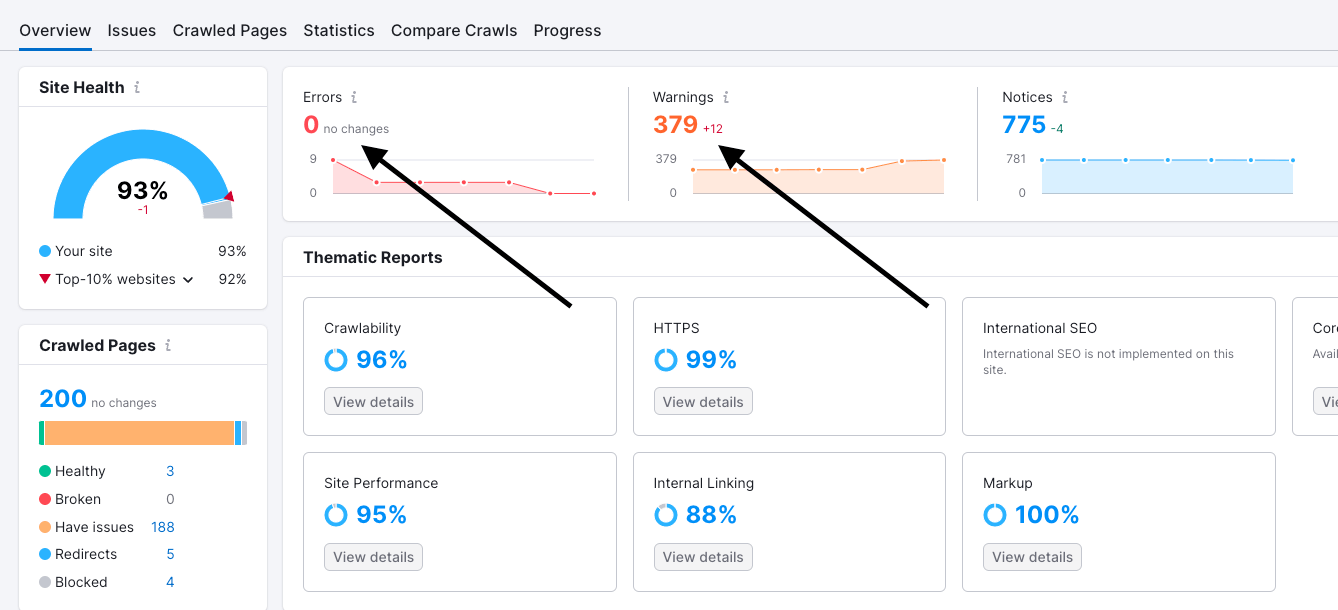
#16 Internally linking pages
It’s also essential to ensure you link to your other pages within the website. This helps search engines understand what each page is about and promotes them in the SERPs.
For example, if you are writing an article about “best locks for front doors”, then anytime you mention the keyword “emergency locksmith”, make sure that you include a link back to your “emergency locksmith” services page from the article. This will send signals throughout the website, and Google will rank the pages higher.
This also helps to create a better user experience as it allows customers to find the information they need quickly and easily.
#17 Website speed performance
Website speed performance is also a key factor when it comes to SEO. If your website takes too long to load, customers are unlikely to wait around and will go elsewhere.
To improve the website speed, compress images, minify HTML and CSS files, reduce HTTP requests and leverage browser caching wherever possible.
Additionally, make sure that you are using a good web hosting provider, as this can have an impact on the website performance. If you’re unsure about which hosting provider to choose, consider checking out Hostinger review for valuable insights.
To compress your images without losing quality, use a website like tinypng.com, and to minify HTML, CSS and Javascript files, you can use online tools such as https://minifier.org/.
And to check your website speed, go to GT Metrix, and they will indicate your website speed performance and how to fix any issues.
#18 Reputation management
The last step is reputation management, which includes monitoring and responding to reviews appropriately. Ensure you respond to all reviews, good and bad, as it shows that you care about your customers. To do this, set up a system that allows customers who have had positive experiences with your business the opportunity to leave reviews on Google My Business, Yelp, Yellow Pages etc.
You should also make sure that you are monitoring any bad reviews and addressing them directly. This will show potential customers that you are taking feedback seriously and willing to work with the customer to resolve their issues.

#19 How to track keyword ranking results
Finally, once you have done all the steps listed above, tracking your progress is important. This can be done using an SEO tracking tool such as SEMRush or Ahrefs. These tools will show you where you rank for certain keywords and how well your website performs compared to competitors.
It’s also good to take personal note of the date and the keyword you want to rank for and put this in a spreadsheet. You can then revisit this sheet and check the keyword performance.
You should also use Google Analytics which will give detailed insights into customer behaviour and allow you to understand how customers interact with your website so that you can make improvements accordingly.
#20 Optimising pages using Surfer SEO
Surfer SEO is a great tool for analysing competitor websites and how they structure their pages. It will also show you what keywords your competitors are targeting and how well those keywords are performing.
Just input the keywords you want to rank, then copy and paste your website content into the tool. The Surfer tool will then score your page out of 100 and then make suggestions to optimise the page. It will suggest how many words you will need, extra keywords, headers, and so much more. Keep optimising until you have a score of 80+; we have found by doing this, we have been able to rank for some very competitive keywords.
Remember this is a tool to help you optimise the page, and it will need a lot of your input; Don’t just spam the content and hope for the best. This kind of poor optimisation will just lead to poor results.
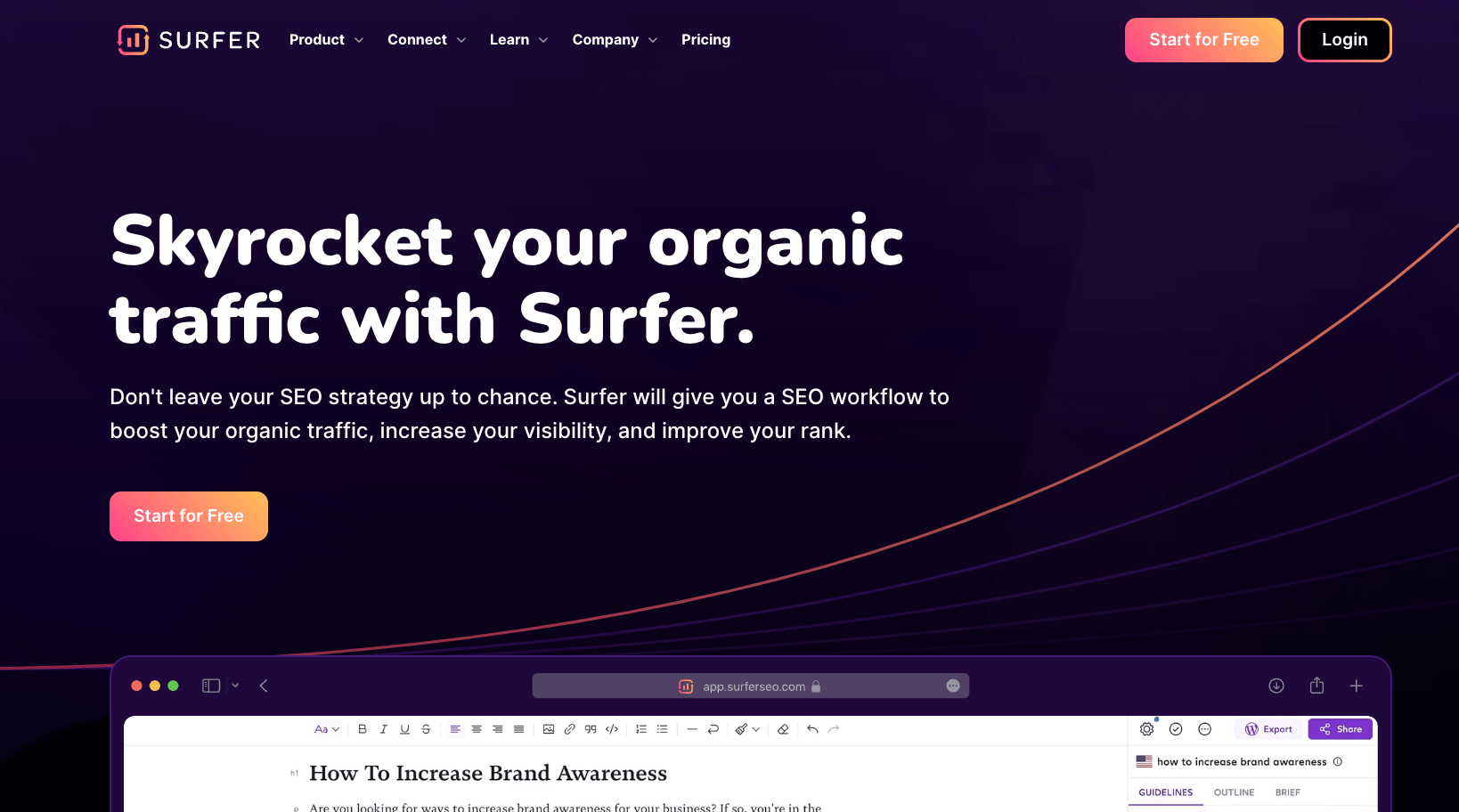
Conclusion
SEO is a process that takes time and can take time. However, follow the steps above and focus on customer experience, website speed performance, reputation management and keyword tracking results. You should get some great results for your website over time.
Remember that SEO requires ongoing work as the algorithms are constantly changing, so staying updated with the latest trends is essential to succeed online.

Speak to an expert
Got a quick question about your marketing? Or you want to run through the details of your next big project. We can help.
Speak to one of our experts today on 01702 668207 or send us a message.
